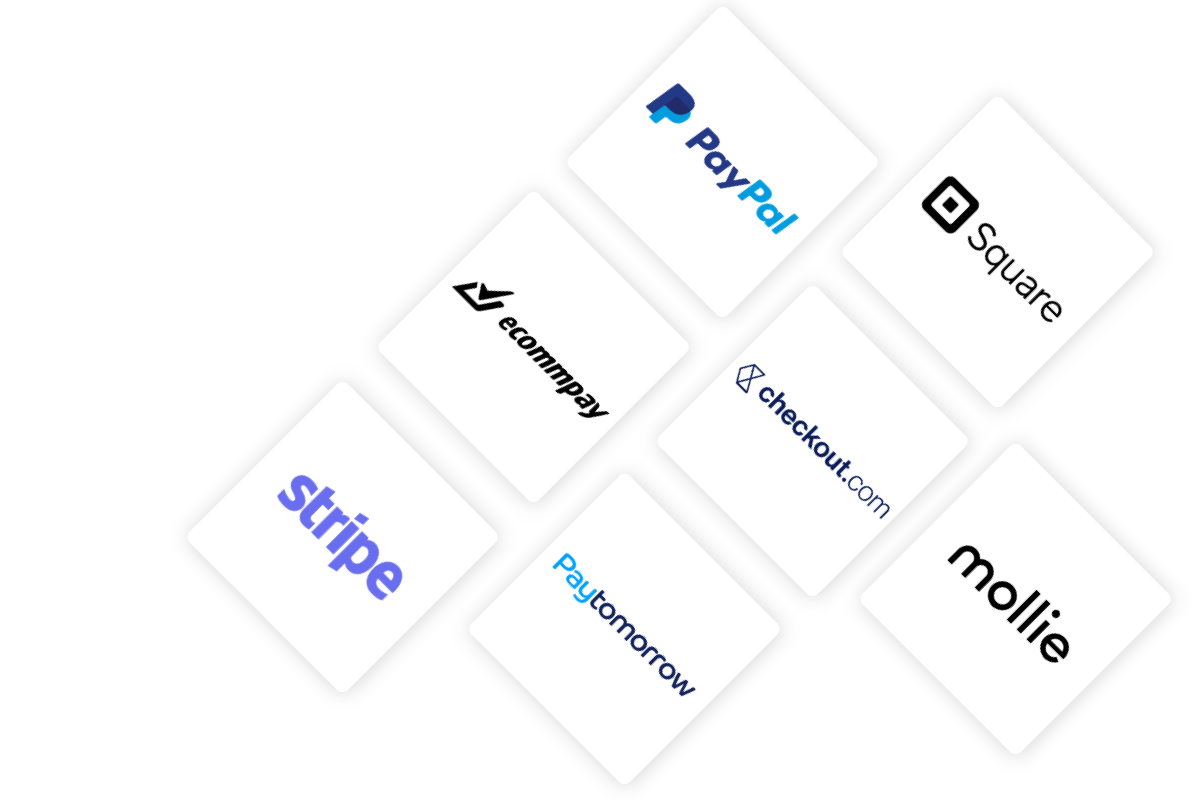Our Payment Links are different
Use your Payment Gateway
Use Multiple Payment Gateways/Methods
Not tied to any product, invoice or amount

Pre-authorize, capture payment or save a card
When growth kicks in, the Accounts Receivable team is often the first to feel the strain. More sales mean more invoices, more chasing, more reconciliation, and more complexity. For many mid-sized businesses, the default response is to hire another credit controller or add more admin support.
But what if you didn’t need to?
This guide is for CFOs and finance leaders at scaling companies who want to reduce DSO, improve cash flow, and future-proof their AR process — without growing headcount.
Let’s dig into the tactics that make it possible.
🔍 The Problem: Growth Without Operational Leverage
Here’s what typically happens in a growing mid-sized business:
AR is managed by a lean team using tools like Xero, QuickBooks, or NetSuite
Invoices go out via email or PDF, with manual follow-up for overdue accounts
Payments come in via bank transfer or card, but reconciling them is tedious
There’s limited visibility into who’s paid, what’s overdue, and what’s next
That’s fine when you’re managing 20–50 invoices a week.
But double that volume — or double your customer base — and suddenly AR becomes a bottleneck.
And that’s when the CFO gets asked:
“Can we bring in someone to help with collections?”
Before you say yes, consider this: hiring is a linear solution to what should be a systems problem.
🚫 The Case Against Adding More AR Staff
Hiring more people feels like the answer. But it comes with hidden costs:
| Issue | Impact |
|---|---|
| Salary + overhead | £40–70k/year per person (UK) / $60–90k/year (US) |
| Training & onboarding | Time-intensive, especially if systems are manual |
| Inconsistency | Manual processes vary from person to person |
| Scale limits | More invoices = more hires = linear cost growth |
Scaling your AR process should not mean scaling your payroll.
✅ The CFO’s Playbook: Scaling AR Through Automation
Here’s how modern CFOs are scaling collections without adding headcount.
1. Introduce Smart Payment Links
Static PDFs with “please pay via bank transfer” are a dead end.
Instead, use smart payment links — dynamic, trackable, and embedded with invoice details. These can be sent automatically via:
CRM (e.g., Salesforce, HubSpot)
Accounting software (e.g., Xero, NetSuite)
Communication tools (e.g., email, SMS, WhatsApp)
The result? Customers get a branded, mobile-friendly payment experience with options like ACH (US), Open Banking (UK), card, or Pay by Bank — no logins or portals.
Impact:
✅ Fewer questions, ✅ faster payments, ✅ less chasing.
2. Automate Follow-Ups and Reminders
Your AR team shouldn’t be writing “Just checking in on this invoice…” emails all day.
Smart systems can:
Trigger reminder links if payment hasn’t been made after X days
Vary the message tone based on payment history
Escalate to SMS or WhatsApp if email fails
Impact:
✅ More consistent follow-up,
✅ fewer missed invoices,
✅ reduced human effort.
3. Streamline Reconciliation
Most AR teams spend too much time matching payments to invoices — especially when bank transfers don’t include a proper reference.
With the right system:
Every payment link is tied to a specific invoice
Reconciliation happens automatically
Payment status is updated in your accounting system in real time
Impact:
✅ Close books faster,
✅ eliminate mismatches,
✅ reduce errors.
4. Measure DSO and Cash Flow in Real Time
As a CFO, you need live visibility — not an end-of-month fire drill.
Modern AR tools let you:
Track open invoices by age, amount, and customer
Monitor DSO trends and payment performance
Forecast cash flow with far greater accuracy
Impact:
✅ Better financial control,
✅ more confidence in reporting,
✅ faster response to late payments.
🧩 How This Works with Your Existing Stack
You don’t need a complete systems overhaul.
Shuttle, for example, integrates directly with:
Xero, QuickBooks, NetSuite, Sage Intacct
Salesforce, HubSpot, Zoho CRM
Make.com, Zapier, Twilio, WhatsApp Business API
No developers required. Just better workflows.
📈 Results from Mid-Sized Finance Teams
| Metric | Typical Improvement |
|---|---|
| Manual AR effort | ↓ 30–50% |
| DSO (Days Sales Outstanding) | ↓ 5–12 days |
| Reconciliation time | ↓ 80% |
| Collections rate | ↑ 10–20% |
You can do more with the team you already have — if you give them the right tools.
🚀 Final Word
You don’t scale finance by scaling headcount.
You scale by removing friction, automating the obvious, and giving your team visibility.
Smart payment links are a simple but powerful unlock — and one that pays off fast.


